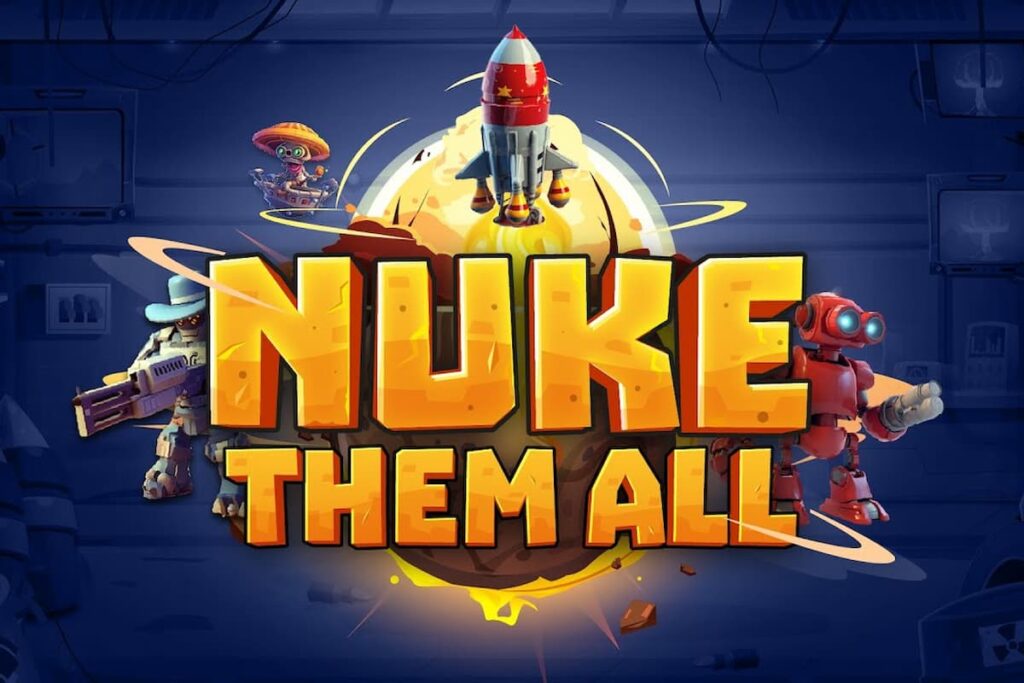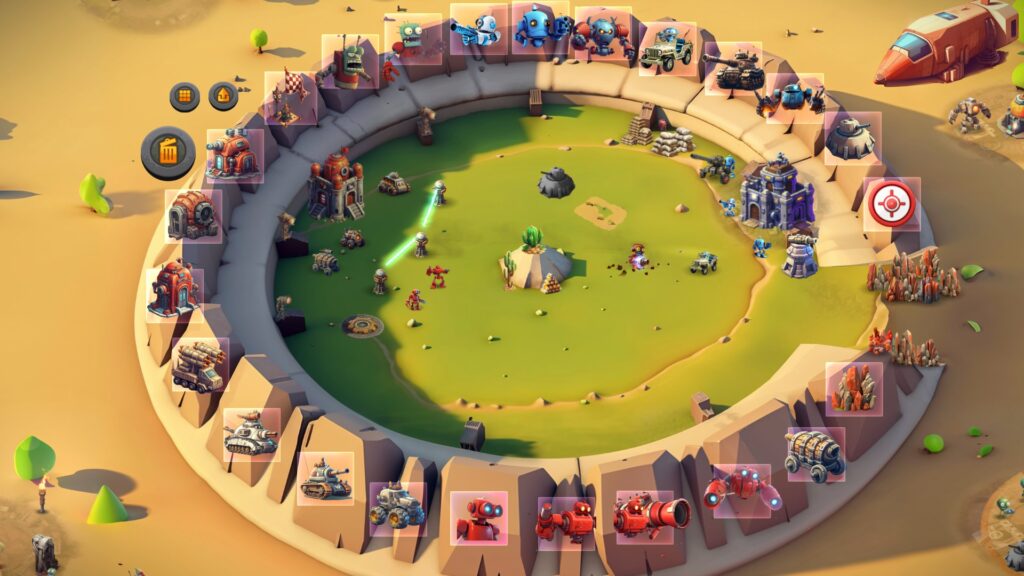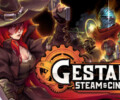
Developer: GameEraStudios
Publisher: GameEraStudios
Platform: PC
Tested on: PC
Nuke Them All – Preview
We reported on the Early Access launch of Nuke Them All last month, and we’d be lying to ourselves if we said that it didn’t pique our interest. An RTS title inspired by the likes of old school Command & Conquer: Red Alert and with similar humor to Destroy All Humans!? Sign us up! It shouldn’t come as a surprise that we’ve been playing Nuke Them All then, not in the least because otherwise we wouldn’t be able to preview it for you. So, is Nuke Them All the bomb, or does it not go out with a bang, but with a whimper?
The basic idea behind Nuke Them All is as simple as it gets: you’re in charge of the red robot army (the good guys, supposedly) and you’re fighting against the blue robot army (boo!). Your objective is to destroy the enemy base while keeping your own base safe from harm. Play your cards right, and eventually, you’ll be able to launch nuclear missiles at the bad guys. Oh, and there are also green zombies to deal with, although they don’t count as a “true” faction. Simplicity is the keyword here, and Nuke Them All is definitely one of the most accessible and easiest-to-understand RTS games we’ve seen in recent years. The tutorial does a very good job of explaining the game’s basics, although if you’ve ever played any RTS title, you should already have a good grasp of what to expect. The most “complicated” control mechanic here is that you can use CTRL+1, CTRL+2, or CTRL+A to select your troops. Everything else feels intuitive. That’s not to say that Nuke Them All is an easy game, but by getting controls out of the way in the simplest way possible, means that you don’t need to spend a lot of time mastering everything and instead can focus on nuking your enemies. The game even goes out of its way to show as few interface elements as possible, which is great for immersion. Further amplifying this are a day/night cycle, weather effects, and random events, including -in a cheeky nod to Dune– giant sandworms.
At the current development stage, Nuke Them All’s main campaign offers six levels, and there are an additional five ‘secret’ levels to unlock. Maps are on the small side, making battles very short, and as such the campaign doesn’t feel like it has a whole lot to offer, especially since games tend to be over before you can unleash the full potential of your arsenal. Because of this, right now the most fun you can have with Nuke Them All is in the game’s sandbox mode. We assumed that this would be a level designer where you’d create your own custom levels and share them with the community, but instead, this is about as literal as a sandbox as you can get. You’re able to simply mash everything in the game together to see what happens, and mess around with it. It’s also a fantastic way to figure out how the more advanced units work, without having to worry about the game ending before you can really try out the big guns.
What makes Nuke Them All stand out from other RTS games is the way the game handles fundamental gameplay elements like resource management. In Nuke Them All, there are no command points or raw materials to worry about. Instead, any production facilities you have under your control will continuously spit out new troops at a steady rate. By upgrading other buildings, you’ll see improved units appear. Upgrading a building is as simple as double-clicking it and waiting for the upgrade process to complete. By removing some of the more complex intricacies of managing units and buildings, you are given more room to focus on the frontal assault instead. This approach makes Nuke Them All feel decidedly more fast-paced, although the downside to this is that the game doesn’t have a whole lot to offer in terms of tactical depth. Additionally, upgrading buildings seems insignificant, and it isn’t always clear which benefits you’re getting. This is one area we definitely hope to see improve in future iterations of Nuke Them All, because without an in-depth explanation of the various upgrades, it’s difficult to see the point of these mechanics.
In fact, this translates to other areas of Nuke Them All as well. We understand that it’s still early days for the game and we’re holding out hope that an advanced tutorial is added eventually, adding in-depth explanations as to what effect your actions actually have and what the most efficient plan of action is. Nuke Them All’s basics are incredibly easy, and well explained, but we found ourselves getting our butts kicked because we weren’t able to really figure out the best plan of action. Instead, we found ourselves unable to retaliate against enemies as we were constantly fighting an uphill battle. It doesn’t help that the enemy AI seemed to know exactly what it was doing, but our own AI didn’t. We’re not sure if this is intentional design or not, but when directing units to attack something, we had to click near the target so that they would move there and then attack, rather than outright click on the target. At times it felt like we weren’t actually in control of an army but instead, we were babysitting it and nudging in a direction. Despite these flaws, we still had a lot of fun with Nuke Them All, and we definitely see potential for the future, as things are streamlined and fleshed out more. It helps that the game’s aesthetics and tongue-in-cheek humor indicate that the game doesn’t take itself seriously.
Conclusion
We don’t know if it’s the ease of access, the over-the-top humor, the nostalgia factor, or something else, but Nuke Them All gets *something* right. While we’re hoping for the future to bring a more fleshed-out campaign and an advanced tutorial that covers the upgrade system in depth, what’s present here is already solid. We do feel that the $19.99/€19.50 is a smidgeon too high for what’s already present here, but given that the game is unfinished as is, we have no doubts that the game will feel fairly priced in a few months.








No Comments